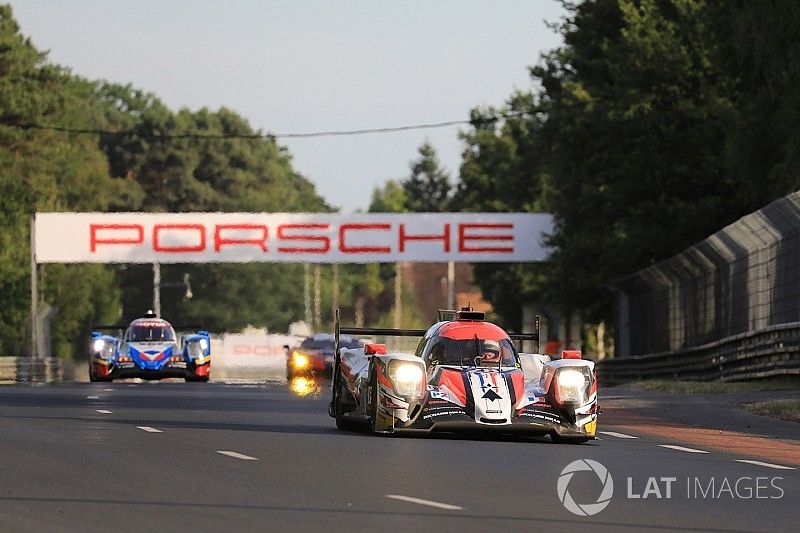Dunlop’s LMP2 Le Mans 24h strategy pointers
Ahead of the 2017 Le Mans 24 Hours, Dunlop gives its take on how tyre strategies for the super-competitive LMP2 class are likely to pan out.

Photo by: Nikolaz Godet











The venerable British firm supplies all bar three of this year’s LMP2 entries in the 85th running of Le Mans, and all 15 of the pace-setting Oreca 07s – making it all but certain to be the winning tyre supplier in the secondary class.
This year’s new LMP2 regulations, which have seen qualifying times in the class fall by around 11 seconds compared to 2016, have provided Dunlop with quite a challenge
The other major change Dunlop has had to contend with is a change in the rules as to how many tyres can be used, with teams limited to 56 tyres (14 sets) for the race, plus an additional set if it has been held over from practice and qualifying.
But with some 40 stops predicted in the race for the LMP2 crews, each of those sets will have a lot of heavy lifting to do – with the potential for quadruple stints in the night.
“By regulation, we have to double-stint every set of tyres, and triple-stint some set of tyres,” explained Jean-Felix Bazelin, Dunlop Motorsport’s director of operations.
“One of the problems we have with the increased performance [of the new LMP2 cars], keeping the same fuel tank, is that the cars will stop every nine laps, or every 33 minutes.
“So we will have 40-ish stops [during the race]. If any of the stints are shorter on mileage, it’s still a problem to understand if we can push more in the night or not.
“We will do three stints, for sure, even with soft tyres [the softest of the three slick compounds on offer], and we will probably do quadruple if needed.”
When it comes to the tyre wear characteristics of the three types of LMP2 chassis Dunlop is supplying (the sole Riley is running Michelins), Bazelin said they are broadly comparable in terms of tyre life, although this hasn’t always been the case.
“At Silverstone [in the ELMS race], it was obvious the Oreca was loading very hard the fronts,” he said. “The Dallara was using the rears too hard, and the Ligier was balanced.
“That being said, they quickly understood, Dallara and Oreca, and now their cars are much more balanced.
“Probably one of the reasons [at Silverstone] was they did not know the car very well and they didn’t have all the spare parts to go where we wanted.”
Another challenge drivers face this year is the revised system of slow zones around the Circuit de la Sarthe, which will put tyres in danger of dropping out of their operating window, especially as temperatures fall in the evening.
Managing this loss in grip, and mastering the transition when exiting a slow zone and returning to racing speeds, is an area where Dunlop feels it can be of particular use to the drivers.
“The impact [of the slow zones] is your [tyre] temperature is decreasing, so you can lose grip, so the drivers will have to be extremely careful when they restart,” said Bazelin.
“Managing your tyres, you have to know the impact of lower speed and pressure and temperature. We try to explain to the drivers how it works. We monitor pressure of the tyres, so we can probably give some recommendations.”
Be part of Motorsport community
Join the conversationShare Or Save This Story
Subscribe and access Motorsport.com with your ad-blocker.
From Formula 1 to MotoGP we report straight from the paddock because we love our sport, just like you. In order to keep delivering our expert journalism, our website uses advertising. Still, we want to give you the opportunity to enjoy an ad-free and tracker-free website and to continue using your adblocker.















Top Comments